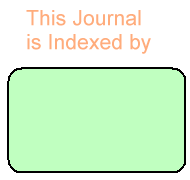Maxwell Ogochukwu Adibe1 ![]() ,
Nneka Uchenna Igboeli1,
Chukwuemeka Michael Ubaka1,
Patrick Obinna Udeogaranya1,
Nkejah Precious Onwudiwe2,
Obo Okokon Ita1
,
Nneka Uchenna Igboeli1,
Chukwuemeka Michael Ubaka1,
Patrick Obinna Udeogaranya1,
Nkejah Precious Onwudiwe2,
Obo Okokon Ita1
For correspondence:- Maxwell Adibe Email: maxwell.adibe@unn.edu.ng Tel:+2348037781479
Received: 27 March 2014 Accepted: 15 January 2015 Published: 31 March 2015
Citation: Adibe MO, Igboeli NU, Ubaka C, Udeogaranya PO, Onwudiwe NP, Ita OO. Evaluation of information contained in drug advertisement and promotion materials in Nigeria. Trop J Pharm Res 2015; 14(3):539-544 doi: 10.4314/tjpr.v14i3.25
© 2015 The authors.
This is an Open Access article that uses a funding model which does not charge readers or their institutions for access and distributed under the terms of the Creative Commons Attribution License (http://creativecommons.org/licenses/by/4.0) and the Budapest Open Access Initiative (http://www.budapestopenaccessinitiative.org/read), which permit unrestricted use, distribution, and reproduction in any medium, provided the original work is properly credited..
Purpose: To evaluate the physical characteristics (size, legibility or readability) and the completeness of information in drug package leaflets/inserts and drug promotional brochures in Nigeria.
Methods: Three hundred materials (drug information leaflets and brochures) were collected from various community pharmacies, private and governmental clinics and from various pharmaceutical distributor or representatives from different states of Nigeria. Two independent panels sorted and evaluated the information found in them and differences were resolved by consensus.
Results: This study revealed that 80.7 % of the materials evaluated were leaflets while brochures accounted for 18 %. The physical characteristics of the materials showed that 58.7, 31.3 and 89.0 % of the materials were sizeable, readable/legible and had adequate color contrast respectively. Most of the materials were written in English (78.7 %), English and French 17.3 %, English and Arabic accounted for only 4 %. Description of indications for which the drugs were used was mentioned in 30.3 % of materials. Other contents of the materials were mechanism of action (70.3 %), overdoses information (55.0 %), drug interaction (51.3 %), pharmacokinetics (36.3 %) and revision date of the information (21.0 %).
Conclusion: This study reveals that advertising materials used in promoting drugs in Nigeria have incomplete information and the physical characteristics of the materials are not adequate. It seems that drug industries at present mainly aim at increasing sales rather than promoting health care. Information in some pharmaceutical brochures exaggerated the benefits of the drug and downplayed risks associated with the drugs.
Archives


News Updates